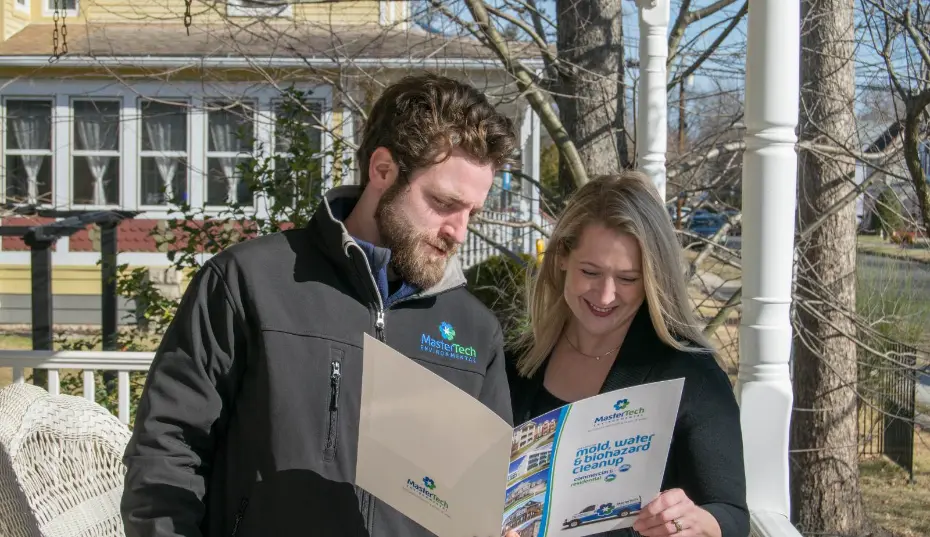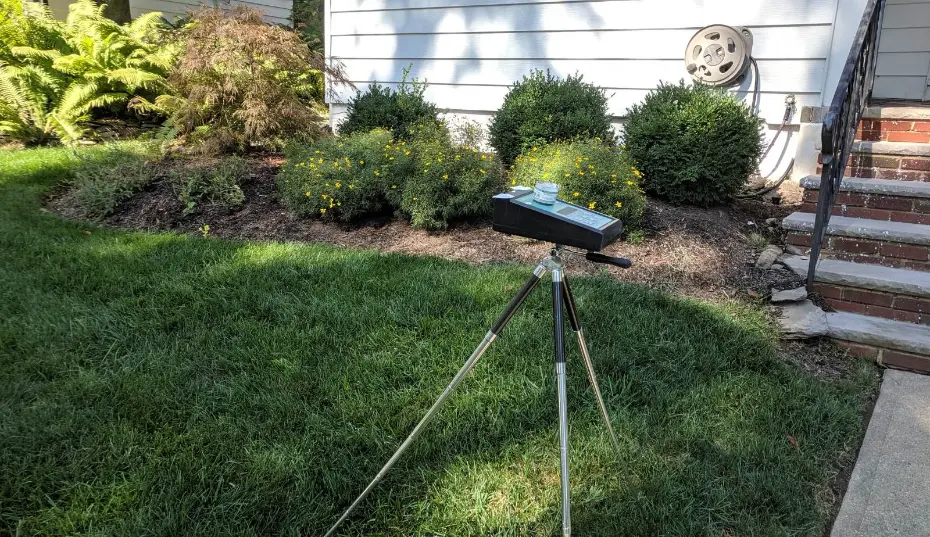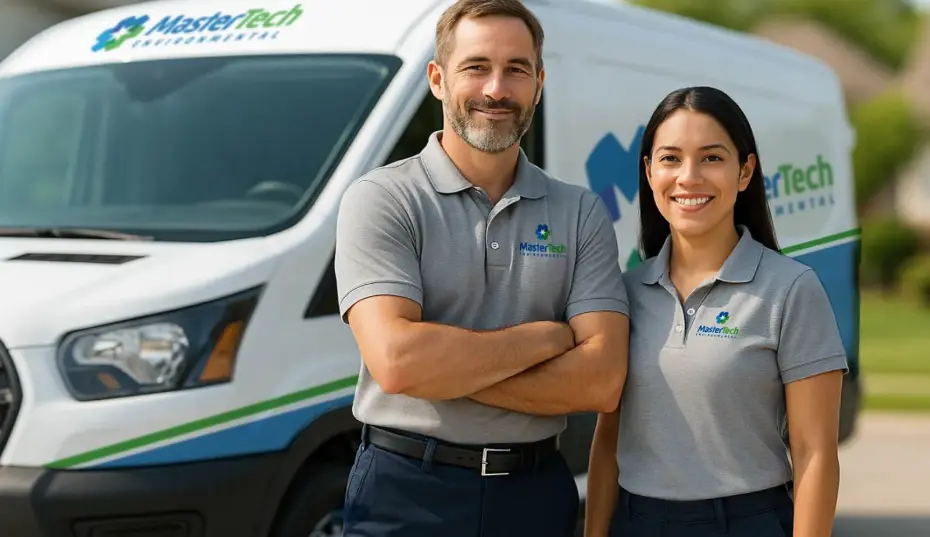Navigating the aftermath of a mold inspection in Myrtle Beach can be daunting for homeowners. After a thorough evaluation, the next steps typically involve an assessment of the mold type, extent of the infestation, and a detailed plan for remediation. Understanding these steps ensures that residents can take appropriate actions to protect their homes and health.
Mastertech Environmental of Myrtle Beach provides critical insights into what homeowners should expect following an inspection. They highlight that the results will not only guide remediation efforts but also inform necessary preventative measures to reduce the risk of future mold growth. Knowledge of the specific type of mold identified can also help in addressing any related health concerns.
The process may include recommendations for mold removal, as well as guidance on repairs needed to eliminate moisture sources. By being informed about what follows an inspection, homeowners can actively engage in creating a safer living environment.
Understanding Your Mold Inspection Report
Interpreting a mold inspection report is crucial for homeowners in Myrtle Beach. The report provides vital information regarding mold presence, types, and potential health risks. Understanding these details can empower property owners to make informed decisions about remediation.
Key Findings and What They Mean
The mold inspection report typically highlights several key findings. These can include mold type, concentration levels, and areas affected.
- Mold Type: The report will categorize molds as allergenic, pathogenic, or toxic.
- Concentration Levels: Concentrations are often measured in spores per cubic meter of air. Higher numbers indicate a more serious issue and necessitate immediate action.
- Affected Areas: Specific locations within the home will be documented, guiding remediation efforts effectively.
Being aware of these findings allows homeowners to assess the severity of the mold issue and prioritize remediation steps accordingly.
Common Mold Types Detected
Several common mold types may be identified during the inspection. Each type poses different risks to health and property.
- Aspergillus: Often found in outdoor air, it can cause respiratory issues.
- Cladosporium: Frequently growing on organic materials, it may trigger allergies.
- Stachybotrys (Black Mold): Known for its toxic properties, it often grows in water-damaged areas.
Understanding these molds helps homeowners realize the potential dangers and the need for urgent remediation.
Potential Health Impacts Noted
Exposure to mold can lead to various health issues, varying by individual sensitivity and mold type.
- Respiratory Issues: Common respiratory problems include asthma attacks and allergic reactions.
- Skin Irritation: Some molds may cause rashes or skin irritation upon contact.
- Neurological Effects: Certain toxic molds like Stachybotrys can lead to more severe neurological issues.
The health impacts noted in the report should motivate homeowners to address mold issues swiftly to protect their well-being and that of their family.
Immediate Steps to Take After the Mold Inspection
After a mold inspection, it is crucial to follow identified recommendations and take necessary safety precautions. Prompt actions can significantly mitigate health risks and property damage.
Addressing Urgent Recommendations
Upon receiving the mold inspection report, homeowners should address any urgent recommendations provided by the inspector. These may include immediate containment of affected areas to prevent mold spores from spreading.
Key actions:
- Seal Off Affected Areas: Use plastic sheeting to contain the mold area.
- Turn Off HVAC Systems: This helps avoid circulating spores throughout the home.
- Consider Professional Help: If high levels of mold are detected, hiring a licensed remediation specialist is advisable.
Assessing and acting on these recommendations can help protect the health of residents and maintain the integrity of the home.
Initial Safety Precautions for Homeowners
Homeowners should prioritize safety when dealing with mold. Initial precautions are vital to prevent exposure or further contamination.
Safety measures include:
- Wear Protective Gear: N95 masks, gloves, and goggles should be worn when entering affected areas.
- Limit Foot Traffic: Reduce access to contaminated areas until they are treated.
- Ventilation: Open windows if safe to do so, ensuring fresh air circulates.
In some cases, individuals might experience respiratory symptoms or allergies due to mold exposure. Awareness and adherence to safety measures can help minimize health impacts while decisions regarding remediation are made.
Consultation with Mastertech Environmental of Myrtle Beach
After a mold inspection, a consultation with Mastertech Environmental provides vital insights into the findings and necessary next steps. The specialists guide homeowners through the interpretation of inspection results and available remediation options, ensuring informed decisions can be made.
Interpreting Inspection Results
During the consultation, Mastertech professionals detail the findings of the mold inspection report. This report typically includes:
- Types of Mold Identified: Distinction between dangerous and non-dangerous molds.
- Affected Areas: Locations within the property that show signs of mold growth.
- Moisture Levels: Data regarding humidity and water sources contributing to mold proliferation.
Understanding these components is crucial for homeowners. Mastertech's experts clarify the health implications of the identified mold species. They also discuss other risk factors that may necessitate immediate action, thereby helping homeowners prioritize remediation efforts.
Discussing Remediation Options
Mastertech Environmental outlines specific remediation options tailored to the inspection results. They cover several strategies, including:
- Containment Measures: Preventing the spread of spores during remediation.
- Removal and Cleaning: Safe removal of contaminated materials and surfaces.
- Moisture Control Solutions: Suggestions on improving ventilation and reducing humidity levels.
The consultation also emphasizes the importance of following industry-standard practices to ensure effective mold removal. Homeowners can expect a comprehensive plan that includes both short-term and long-term strategies. This ensures not only the removal of existing mold but also prevention of future growth, enhancing the safety and comfort of the living environment.
Developing a Mold Remediation Plan
Creating a mold remediation plan is essential for effectively addressing mold issues identified during an inspection. The plan should cater specifically to the property’s conditions and the extent of the mold contamination. Each stage of the remediation process requires careful consideration.
Customizing Solutions for Your Property
Every property presents unique challenges when it comes to mold remediation. Factors such as the type and location of mold, extent of contamination, and building materials involved must guide the approach.
- Assessment: An in-depth inspection helps identify all affected areas.
- Containment: Strategies should focus on preventing mold spores from spreading during remediation, potentially using plastic barriers and negative air pressure.
- Remediation Techniques: Solutions may include:
- Removal: Safely disposing of materials that cannot be cleaned.
- Cleaning: Using appropriate biocides and mold inhibitors on salvageable surfaces.
- Repair: Fixing any structural issues that contributed to mold growth, such as leaks.
Customized plans should be documented to ensure transparency and accountability throughout the process.
Timeline and Cost Estimates
Developing a timeline and budget is vital for the remediation plan's feasibility.
- Timeline: The duration of remediation varies based on factors like:
- Extent of Infestation: Larger areas take more time.
- Type of Remediation: Removal is generally longer than cleaning.
Generally, typical timelines may range from several days to weeks.
- Cost Estimates: Costs can vary widely based on:
- Extent of Damage: Significant damage incurs higher costs.
- Remediation Methods: Specialized techniques, such as encapsulation or air purification, could increase costs.
Estimated costs could fall anywhere between $500 to several thousand dollars, making it essential to have a clear budget that includes unexpected expenses. Providing clients with upfront estimates fosters trust and sets realistic expectations.
Mold Remediation Process Explained
Mold remediation involves a systematic approach to remove mold and ensure safety. It entails careful isolation of affected areas and the application of specialized techniques to eradicate mold.
Isolation and Containment Procedures
During the mold remediation process, isolation and containment are critical first steps. Professionals seal off contaminated areas to prevent mold spores from spreading to clean zones. They may use plastic sheeting to create barriers and employ negative air pressure machines to control airflow.
Ventilation is also restricted to keep spores contained. This ensures that individuals remaining in the building are not exposed to harmful spores during the remediation process. Additionally, the use of personal protective equipment (PPE) is required for workers. This may include respirators, gloves, and protective suits to minimize health risks.
Remediation Techniques Used
Once the contaminated areas are contained, a variety of remediation techniques are implemented. Professionals may use Ultram or other advanced cleaning agents to effectively eliminate mold.
Common methods include:
- Physical Removal: This involves removing mold-infested materials, such as drywall or carpeting.
- Chemical Treatments: Specialized solutions are applied to surfaces to kill and inhibit mold growth.
- HEPA Vacuuming: High-Efficiency Particulate Air (HEPA) vacuums are used to capture airborne spores.
After remediation, tests ensure no spores remain and the areas are safe for habitation. These techniques collectively enhance indoor air quality and safeguard health.
Post-Remediation Verification and Testing
Post-remediation verification is a critical step following mold remediation. It ensures the environment is safe and free from harmful contaminants, allowing for re-occupancy. This process includes clearance testing procedures and thorough assessments to confirm the effectiveness of the remediation efforts.
Clearance Testing Procedures
Clearance testing is the process performed to confirm that mold remediation has been successful. It involves a series of inspections and tests to assess the air and surfaces in the affected areas. Key procedures include:
- Visual Inspections: A professional inspects the space to identify any visible mold or moisture issues that may remain.
- Air Sampling: Air samples are collected and analyzed to detect the presence of mold spores.
- Surface Testing: Swab or tape samples are taken from surfaces to check for mold residues.
These methods provide a clear picture of the indoor air quality and the effectiveness of the remediation work conducted.
Ensuring Complete Removal
Ensuring complete removal of mold is paramount for health and safety. This verification process assesses whether all visible and hidden mold has been eliminated.
The verification typically involves:
- Independent Third-Party Inspections: Professionals not involved in the remediation process conduct verification to ensure objectivity.
- Environmental Testing: Testing conditions that could promote future mold growth are evaluated, ensuring the space is safe and habitable.
By following strict protocols and using qualified professionals, property owners can be confident that their environment is free of mold threats and safe for occupants.
Preventive Measures and Ongoing Maintenance
Effective mold management requires proactive measures and regular maintenance. By focusing on moisture control and routine monitoring, homeowners can significantly reduce the risk of mold development following an inspection.
Moisture Control Strategies
Controlling moisture is crucial for preventing mold growth. Homeowners should proactively implement the following strategies:
- Seal Leaks: Inspect plumbing and roofing for leaks. Prompt repairs can prevent water accumulation.
- Ventilation: Ensure proper ventilation in areas prone to humidity, such as kitchens and bathrooms. Use exhaust fans or open windows to enhance air circulation.
- Dehumidifiers: Use dehumidifiers in damp areas like basements to maintain humidity levels below 60%.
- Insulation: Properly insulate walls, attics, and crawl spaces to reduce condensation.
- Waterproofing: Apply waterproof coatings in areas prone to flooding.
These strategies create an environment less conducive to mold, promoting long-term property health.
Routine Mold Monitoring
Regular monitoring can catch mold issues before they escalate. Homeowners should consider these practices:
- Regular Inspections: Conduct visual inspections of high-risk areas such as basements, bathrooms, and around windows every few months.
- Air Quality Testing: Engage professionals for air quality assessments, particularly after heavy rainfall or flooding.
- Mold Growth Signs: Familiarize oneself with signs of mold, such as unusual odors or discoloration on walls.
- Log Findings: Maintain a log of any mold-related findings and actions taken for future reference.
By integrating these monitoring practices, homeowners can swiftly address any signs of mold, ensuring a healthier living environment.
Frequently Asked Questions
This section addresses common inquiries that homeowners may have regarding mold inspections and the subsequent steps if mold is found. Understanding these questions will help navigate the process effectively.
What steps should be taken if mold is found during an inspection?
If mold is discovered during an inspection, the property owner should contact a certified mold remediation company promptly. The professionals will conduct a thorough assessment to determine the extent of the mold problem and develop a tailored remediation plan. It’s also wise to avoid disturbing the mold, as this can release spores into the air.
How long does it take to receive results from a mold inspection?
Results from a mold inspection can typically take anywhere from 24 hours to several days. This duration depends on the complexity of the inspection and the type of tests conducted. Homeowners should communicate with the inspection service to get a clearer timeline specific to their situation.
What are the potential health risks associated with mold in the home?
Mold exposure can lead to a variety of health issues. Common symptoms include respiratory problems, allergies, and skin irritation. In some cases, certain mold types produce mycotoxins, which can pose more severe health risks, particularly for vulnerable individuals such as children or those with pre-existing conditions.
Is it necessary to leave the house during mold remediation?
Leaving the house during mold remediation is often recommended, especially if the area is extensive. This measure protects the occupants from potential exposure to mold spores and chemicals used in the remediation process. The remediation company can provide guidance on the best practices based on the specific situation.
How can I prevent mold from recurring after it has been removed?
Preventing mold recurrence involves addressing moisture sources and maintaining proper ventilation. Homeowners should regularly inspect areas prone to dampness, such as basements and bathrooms. Additionally, using dehumidifiers and ensuring adequate airflow can significantly reduce the likelihood of mold returning.
What certifications should a mold remediation company have?
A qualified mold remediation company should hold relevant certifications such as those from the Institute of Inspection, Cleaning and Restoration Certification (IICRC) or similar organizations. These certifications demonstrate that the company adheres to industry standards and practices for effective mold remediation. Homeowners should verify these credentials before hiring a service.


